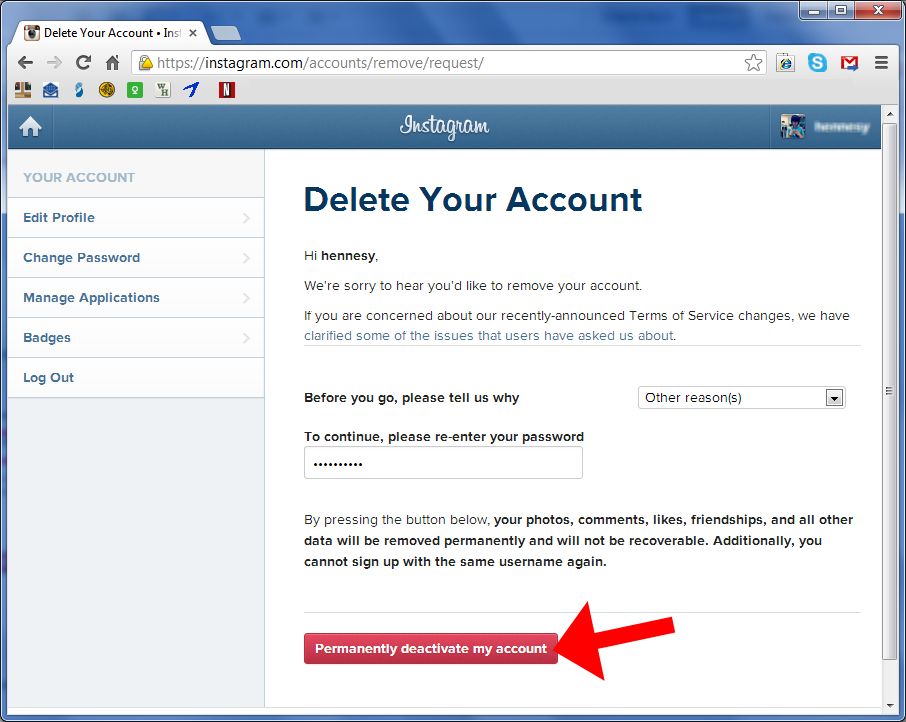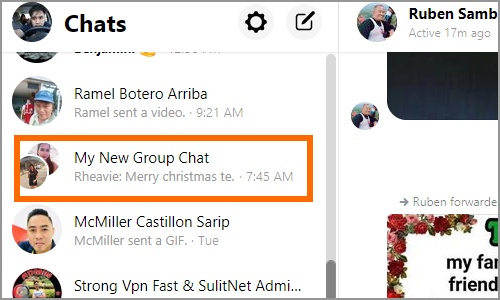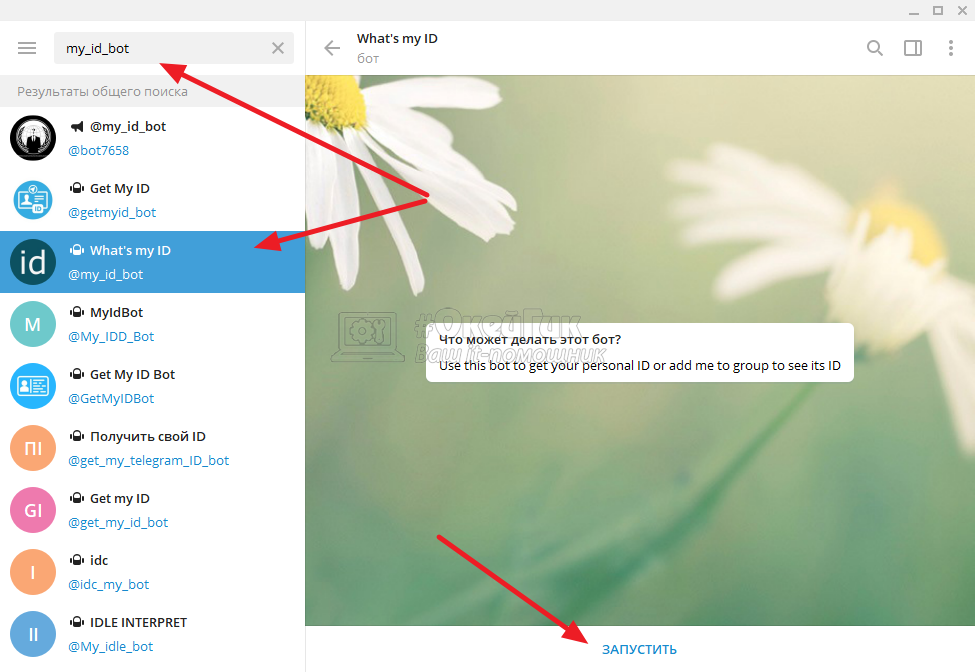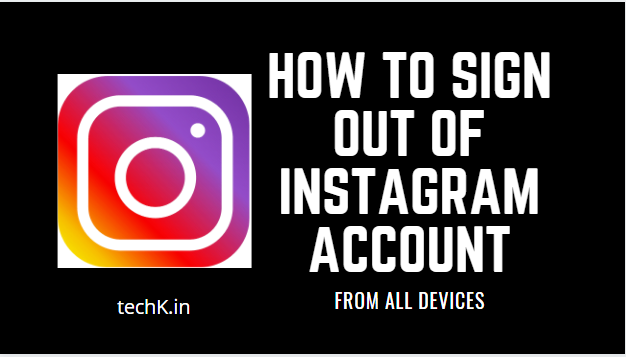How to make your instagram shoppable 2018
How To Set Up Shoppable Posts on Instagram
2018 is already pumping out marketing game changers.
Similar to finding an item on sale or watching your sports team pull off a hail mary, Instagram went for the kill with shoppable posts.
If you don’t already know about shoppable media, oh, do you need to catch up.
Shoppable media gives eligible businesses the ability to tag products in their posts. Check out Instagram’s explainer video through Vimeo for an illustration of user experience.
Essentially, consumers can view product details through Instagram then complete the transaction on a separate landing page.
However, there’s hype around eliminating the need for a separate landing page. In other words, consumers would be able to buy while remaining in the Instagram app. Leaving room for a new level of marketing.
Unfortunately, info on Instagram’s shoppable posts is kind of hard to follow. No worries though, we cracked the code right from Instagram itself.
UPDATE! – It’s Happening:
Yahoo Finance reports: Instagram is becoming an e-commerce platform! Payment features were recently introduced allowing users to add debit and credit cards to their profiles, set up security pins, and start purchasing products without leaving Instagram. Note that this is currently in a test phase, so it’s only open to select users.
REPEAT: People will be able to buy items on Instagram!
UPDATE! – Need to know:
Instagram announced mid-March that these shopping features will open to thousands of businesses that sell apparel, jewelry, or beauty products! And this is no longer a feature in the US. Now, Instagram offers the same shopping experience in Australia, Brazil, Canada, France, Germany, Italy, Spain and in the UK.

Want to get ahead of the curve? Here’s how to prep for Instagram shoppable posts.
The BeginningBack in 2016, Instagram introduced the idea of shoppable media from researching the rise in mobile use, buyer behavior, and digital shopping experience.
Why Instagram? Consider this:
- Instagram feed, Stories, and Live become big opportunities for retailers to make an impression and inspire.
- According to Instagram Business, “80% of Instagram accounts follow a business to feel a closer sense of connection to it—making many feel like they’re part of an exclusive group as a result.”
- Plus, data gathered in 2016 showed, “Consuming 2X more content than non-shoppers, people shopping on Instagram spend 85% of the week exploring the newest products and services.”
Sold on this yet? Good, let’s get into the nitty-gritty.
Insta-Shop EligibilitySo, how do you know if your business will get approved to take the leap of Insta-shop? The criteria:
- Make sure you have the latest version of the Instagram app.

- Convert your Instagram account into a business profile.
- Be an admin on a Page or Business Manager account.
- You must have a product catalog associated with a shop on Facebook.
- You must sell eligible physical goods, meaning no services.
Words of wisdom from Instagram, “We’re giving businesses the power to create and tag a post with products directly from their iOS mobile phone. Once a business has a product catalog connected to their account, tagging a product is as simple as tagging a person in a post.”
Note: If you use Shopify or BigCommerce, you can easily set up shop on Instagram through those platforms.
Pending ApprovalNext question: How do you get approval?
After you complete the steps above to gain eligibility, Instagram will automatically review the account for feature accessibility.
Don’t get too excited though because next comes…waiting. According to Instagram, this review process could take “a few days,” or just “longer” if the review needs completing with higher detail.
You’ll receive a notification on your business profile when approved for product tagging.
Probably won’t take too long, but just saying, prepare to wait in line like it’s a grocery store at noon on a Sunday.
Okay, so you fit the eligibility criteria and set everything up for the review process, and holy target lady you’re a match!
Enable Product TaggingHere’s your next move: Enable product tagging through your Instagram account.
These product tags provide discoverability and help users buy through posts. Below shows the steps taken by consumers during the product tag experience.
Here’s how to get set up with product tags:
- Go to your profile.
- Tap the Get Started alert at the top of your profile.
- If you don’t see the alert in the image above, tap options or the gear wheel.
- Tap Products.
- Tap Continue.
- Select a product catalog to connect to your business profile.

- Tap Done.
Note: If these options aren’t available to you then you have not been approved yet. Take the rain check and try again another sunny day.
Tagging Your PostsNow, let’s turn the set-up process into a completed process. To tag products in Instagram posts, here’s your to-do list:
- After you’ve selected a photo and added a caption, effects, and filters, tap Tag Products from the Share screen.
- Tap the products in the photo you want to tag.
- Enter the names of the products you want to tag, then select them as they appear in the search box.
- Tap Done.
- Tap Share.
Note: Instagram recommends your tags touch directly on the related product. You can also preview tagged products or save a draft.
Other product tagging rules and guide to success:
- From your business profile on Instagram, tag products from new and existing posts.
- Tag 5 products per one single image post or 20 products per multi-image post.
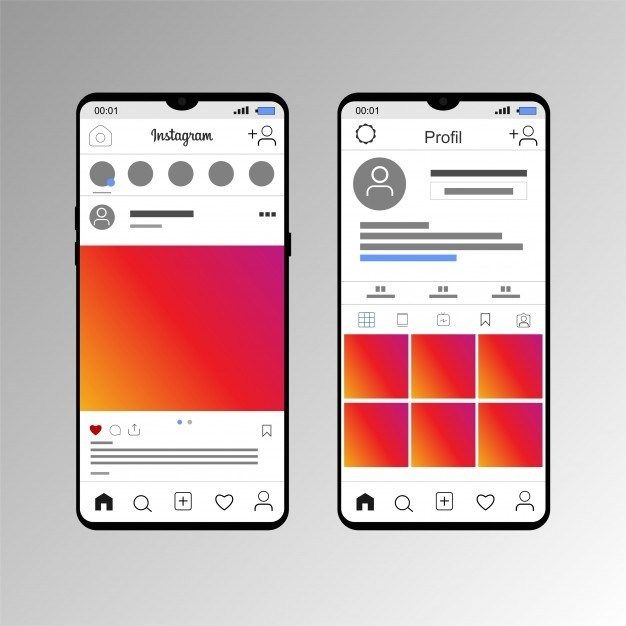
- You can not tag boomerangs, videos, or animated gifs.
- When a user taps on a product tag they will see an image of the product, a description, its cost and lastly, a link directing them to your website for purchase.
What happens if you went through all these steps, and Instagram just says no? First of all, it will be okay. Deep breaths.
Time for the What IfsWhat if you’re approved, but for some reason, you can’t tag products to your posts? Well, Instagram has a few suggestions to why this may be occurring:
- If you receive a message that says “No Products Found” after you tap “Tag Products” in the post creation flow or don’t see “Products” under settings:
- Make sure you have the latest version of the iOS or Android app.
- Make sure your Business Manager catalog or shop catalog is properly associated with the Instagram account through the Facebook Page.
Each Instagram account can only be associated with one Facebook Page and catalog at a time.
- If you don’t see the Tag Products option in the post creation flow, make sure you’ve enabled shopping on your account.
Note: Make sure you’ve enabled the feature by going through the steps given in this article. It never hurts to review your work on a clear head.
- Getting rejected after trying to tag a product?
- The most likely answer is that your tag probably went against Instagram’s broad-level policy.
- A set of commerce policies dictates whether your tagged product gets approved. This process is the equivalent to pending ad approval through Facebook ads.
- Make sure you’re tagging correctly from the get-go to avoid frustration when you actually do it.
As marketers, we love to see our hard work pay off. Instagram set up the shoppable feature with metrics attached. Because what’s a feature without data? Worthless.
Posts with tagged products can collect data involving engagement and clicks. With the view insights option, you’ll access data on impressions, reach, likes, outbound clicks, etc.
With the view insights option, you’ll access data on impressions, reach, likes, outbound clicks, etc.
Want to filter top posts by metric?
Instagram’s insight tool allows you to sort top shopping posts on various metrics. Here’s how:
- Go to your business profile.
- Hit (insert insights icon) in the top right corner.
- Click See More in the Posts section.
- Tap the header of the next page.
- Stay in the know about this feature! It’s too good to not be the first using it.
- User-generated content already fairs pretty well on Instagram. Imagine how much it could explode with shoppable tags.
- According to TechCrunch, “Instead of taking a cut of the purchase amount, Instagram plans to monetize the feature by letting business accounts pay to display their shoppable photos in the feeds of users who don’t follow them already.
Okay, you’re all set. Happy tagging!
Looking for more insight like this? Sign up for our daily marketing newsletter, the Daily Carnage.

How to Set Up Instagram Shopping to Sell More Products
Forget the mall: these days, Instagram is the place to shop til you drop.
Sure, there’s no Orange Julius for a mid-spree snack sesh, but Instagram Shopping brings the retail experience to social media to reach an audience of more than 1 billion monthly users.
Rather than directing customers from your Instagram account to your website, Instagram Shopping allows them to select and purchase products easily from the app.
More than 130 million users tap on an Instagram Shopping post each month — foot traffic a brick-and-mortar shop owner could only dream of. So if you have products to sell, it’s time to set up your virtual storefront. Let’s get started.
First, watch this video to find out how to set up your Instagram Shop:
What is Instagram shopping?
How to get approved for Instagram shopping
How to set up Instagram shopping
How to create Instagram shopping posts
How to create Instagram Shopping Stories
How to create Instagram Shopping ads
How to create an Instagram live shopping stream
How to create Instagram Shopping Guides
12 tips for selling more products with Instagram shopping
Bonus: Download a free checklist that reveals the exact steps a fitness influencer used to grow from 0 to 600,000+ followers on Instagram with no budget and no expensive gear.
What is Instagram shopping?Instagram Shopping is a feature that allows eCommerce brands to create a digital, shareable catalog of their products right on Instagram.
Users can learn more about products right in the app, and either purchase directly on Instagram (with Checkout) or click through to finish the transaction on the brand’s eCommerce site.
Sharing products or promoting sales on Instagram is nothing new. According to Instagram, 87% of users say influencers have inspired them to make a purchase, and 70% of avid shoppers turn to the platform to discover new products.
In the past, the only option for e-tail brands to directly drive sales traffic from a ‘gram was either through their bio link, or via clickable Instagram Stories.
With these new Instagram Shopping features, the whole process is streamlined. See it, like it, buy it, in a few clicks: the full Ariana Grande cycle.
Here are a few key details and terms that every Instagram retailer should know before they get started:
An Instagram Shop is a brand’s customizable digital storefront, which allows customers to shop right from your Instagram profile.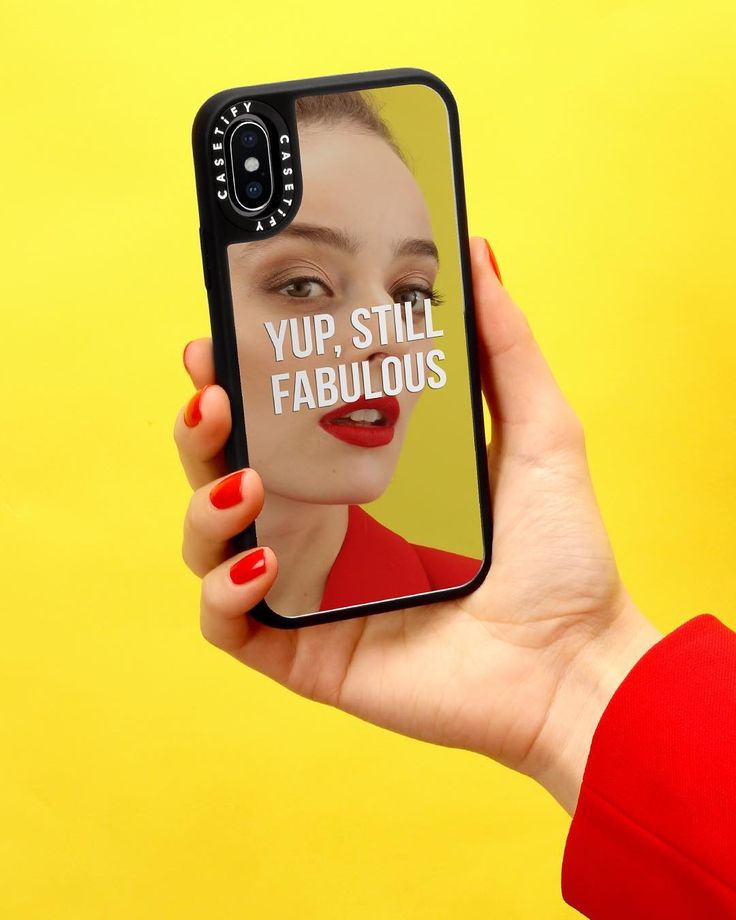 Think of it as a landing page where users can discover or browse all your products.
Think of it as a landing page where users can discover or browse all your products.
Source: Instagram
Product Detail Pages display all of the key product information, from the item description to the price to photography. The product detail page will also pull in any product-tagged images on Instagram.
Source: Instagram
Collections are a way that Shops can present products in a curated group — basically, it’s like merchandising your digital front window. Think: “Cute Spring Outfits,” “Handmade Pottery,” or “Nike x Elmo Collab.”
Source: Instagram
Use a Shopping Tag to tag products from your catalog in your Stories, Reels, or Instagram posts, so your audience can click through to learn more or buy. U.S. businesses who use Instagram’s limited Checkout feature can also tag products in post captions and bios. (You can also use Shopping Tags in ads! Yowza!)
Source: Instagram
With Checkout (currently only available in select regions), customers can purchase products directly in Instagram, without leaving the app. (For brands without Checkout functionality, customers will be directed to a checkout page on the brand’s own ecommerce site.)
(For brands without Checkout functionality, customers will be directed to a checkout page on the brand’s own ecommerce site.)
Source: Instagram
The new Shop discovery tab on the Instagram app provides a discovery tool for non-followers, too. Scroll through goods from brands big and small, all around the world: it’s window-shopping 2.0.
Source: Instagram
Before you can set up Instagram Shopping, you need to ensure your business checks a few boxes for eligibility.
- Your business is located in a supported market where Instagram Shopping is available. Check the list to confirm.
- You sell a physical, eligible product.
- Your business complies with Instagram’s merchant agreement and commerce policies.
- Your business owns your eCommerce website.
- You have a business profile on Instagram. If your account is set up as a personal profile, don’t worry — it’s easy to change your settings to business.

If you don’t already have a Business (or Creator) account on Instagram, it’s time to take the plunge.
Besides qualifying you for Instagram Shopping features, Business accounts also have access to all sorts of exciting analytics… and can use Hootsuite’s scheduling dashboard for posts, too.
Plus, it’s free. Get on it! Here’s our step-by-step guide to switching your personal account over (and 10 reasons why you should!).
Step 2: Use Commerce Manager to set up a shop
1. Use Commerce Manager or a supported platform to set up a shop.
2. To choose a checkout method, select where you want customers to complete their purchases.
Hot tip: Checkout on Instagram is recommended for businesses based in the US because it enables people to buy your products directly on Instagram. Get more information on setting up your Checkout functionality here!
3. To choose sales channels, select the Instagram business account you want to be associated with your shop.
To choose sales channels, select the Instagram business account you want to be associated with your shop.
4. If you have a Facebook Page, check the box next to your account to have a shop on both Facebook and Instagram.
Step 3: Connect To a Facebook PageIf you have a Facebook Page, you’ll want to connect it to your Instagram Shop to make things flow smoothly. You’re no longer required to have a Facebook Page to set up an Instagram Shop, but if you want to, here’s how to set one up in seven easy steps. I’ll wait.
Now, time to link the two!
1. On Instagram, go to Edit Profile.
2. Under Public Business Information, select Page.
3. Choose your Facebook Business Page to connect.
4. Ta-da!
Step 4: Upload your product catalogOkay, this is the part where you actually upload all of your products. You’ve got a couple of different options here. You can either input every product manually into Commerce Manager, or integrate a pre-existing product database from a certified eCommerce platform (like Shopify or BigCommerce.)
You can either input every product manually into Commerce Manager, or integrate a pre-existing product database from a certified eCommerce platform (like Shopify or BigCommerce.)
Hot tip: Hootsuite has a Shopify integration now, so it’s super simple to manage your catalog right from your dashboard!
Let’s walk through each catalog creation option step-by-step.
Option A: Commerce Manager1. Log into Commerce Manager.
2. Click on Catalog.
3. Click on Add Products.
4. Select Add Manually.
5. Add a product image, name, and description.
6. If you have an SKU or unique identifier for your product, add it within the Content ID section.
7. Add a link to the website where people can buy your product.
8. Add the price of your product that is shown on your website.
9. Select the availability of your product.
10. Add categorization details about the product, like its condition, brand, and tax category.
11. Add shipping options and return policy information.
12. Add options for any variants, like colors or sizes.
13. Once you’re done, click Add Product.
Option B: Integrate an Ecommerce Database1. Go to Commerce Manager.
2. Open the Catalog tab and go to Data Sources.
3. Select Add Items, then Use a Partner Platform, then hit next.
4. Select your platform of choice: Shopify, BigCommerce, ChannelAdvisor, CommerceHub, Feedonomics, CedCommerce, adMixt, DataCaciques, Quipt or Zentail.
5. Follow the link to the partner platform website and follow the steps there to connect your account with Facebook.
Hot tip: Remember to keep catalog maintenance top of mind. Once your catalog is set up, it’s important to maintain it. Always keep product photos updated and hide unavailable items.
Step 5: Submit your account for reviewAt this point, you’ll need to submit your account for review. These reviews usually take a couple of days, but sometimes it might run longer.
These reviews usually take a couple of days, but sometimes it might run longer.
1. Go to your Instagram profile settings.
2. Tap Sign Up for Instagram Shopping.
3. Follow the steps to submit your account for review.
4. Check the status of your application by visiting Shopping in your Settings.
Step 6: Turn on Instagram ShoppingOnce you’ve passed the account review process, it’s time to connect your product catalog with your Instagram Shop.
1. Go to your Instagram profile settings.
2. Tap Business, then Shopping.
3. Select the product catalog you’d like to connect with.
4. Tap Done.
How to create Instagram shopping postsYour digital shop is shined up and gleaming. Your product inventory is bursting at the seams. You’re ready to start making that money — all you need is a customer or two.
Watch this video to find out how to tag your products in your Instagram posts, Reels, and Stories directly on Instagram:
You can also create and schedule or auto-publish shoppable Instagram photos, videos, and carousel posts alongside all your other social media content using Hootsuite.
To tag a product in an Instagram post in Hootsuite, follow these steps:
1. Open your Hootsuite dashboard and go to Composer.
2. Under Publish to, select an Instagram Business profile.
3. Upload your media (up to 10 images or videos) and type out your caption.
4. In the preview on the right, select Tag products. The tagging process is slightly different for videos and images:
The tagging process is slightly different for videos and images:
- Images: Select a spot in the image, and then search for and select an item in your product catalog. Repeat for up to 5 tags in the same image. Select Done when you’re finished tagging.
- Videos: A catalog search appears right away. Search for and select all the products you want to tag in the video.
5. Select Post now or Schedule for later. If you decide to schedule your post, you will see suggestions for the best times to publish your content for maximum engagement.
And that’s it! Your shoppable post will show up in the Hootsuite Planner, alongside all of your other scheduled content.
You can also boost your existing shoppable posts directly from Hootsuite to help more people discover your products.
Note: You’ll need an Instagram Business account and an Instagram shop to take advantage of product tagging in Hootsuite.
Shoppable Instagram posts will feature a shopping bag icon in the bottom left corner. All the products your account has tagged will appear on your profile under the Shopping tab.
All the products your account has tagged will appear on your profile under the Shopping tab.
Use the Stickers function to tag a product in your Instagram Story.
Upload or create your content for your story as usual, then hit the sticker icon in the top-right corner. Find the Product sticker, and from there, choose the applicable product from your catalog.
(Hot tip: You can customize your product sticker to match the colors of your Story.)
How to create Instagram Shopping adsEither boost a Shoppable post that you’ve already created, or build an ad from scratch in Ads Manager using the Instagram Product tags. Easy!
Ads with product tags can either drive to your eCommerce site or open up Instagram Checkout if you have that functionality.
Check out our guide to Instagram advertising here for more information on Ads Manager.
Source: Instagram
In many parts of the world, live stream shopping is a regular part of eCommerce culture. With the introduction of Instagram Live Shopping, businesses in the US can now use Checkout on Instagram during Live broadcasts.
With the introduction of Instagram Live Shopping, businesses in the US can now use Checkout on Instagram during Live broadcasts.
Basically, Instagram Live Shopping allows creators and brands to connect with shoppers live, host product demos and encourage purchases in real-time.
It’s a powerful tool, so it deserves its own in-depth blog post. Luckily, we wrote one. Get the 4-1-1- on Live Shopping on Instagram here.
Source: Instagram
One of the latest features on the app, Instagram Guides are like mini blogs that live right on the platform.
For users with an Instagram Shop, this can be a great way to promote products with a bit of an editorial angle: think gift guides or trend reports.
1. From your profile, click the plus symbol in the upper right corner.
2. Select Guide.
3. Tap Products.
4. Search by account for the product listing you’d like to include. If you’ve saved the product to your wishlist, you can find it there also.
5. Select the product you’d like to add and tap Next. You can choose to include multiple posts for a single entry if available. They will be displayed like a carousel.
6. Add your guide title and description. If you would like to use a different cover photo, tap Change Cover Photo.
7. Double check the pre-populated place name, and edit as needed. If you wish, add a description.
8. Tap Add Products and repeat steps 4–8 until your guide is complete.
9. Tap Next in the upper right corner.
10. Tap Share.
12 tips for selling more products with Instagram shoppingNow that your virtual shelves are stocked, it’s time to catch a potential buyer’s eye.
Bonus: Download a free checklist that reveals the exact steps a fitness influencer used to grow from 0 to 600,000+ followers on Instagram with no budget and no expensive gear.
Get the free guide right now!
Here are some best practices for encouraging users to shop ‘til they drop. (Or should that be “‘Gram til they… blam?” Hmmm, still workshopping that one.)
1. Use striking visualsInstagram is a visual medium, so your products better be looking good out there in the grid! Prioritize high-quality photos and videos to keep your wares looking professional and appealing.
Just take a look at the playful way fashion brand Lisa Says Gah displays its tote bags: dangling from an arm that’s holding a bottle of wine.
Make sure you’re up-to-date with the most recent image and video specs (Instagram sometimes changes things up), and that photos and videos are high-resolution whenever possible.
If you can, give your product shots an exciting, editorial vibe, showcasing your goods in action or in a real-world setting. Sharing beautiful details shots can be an eye-catching option too.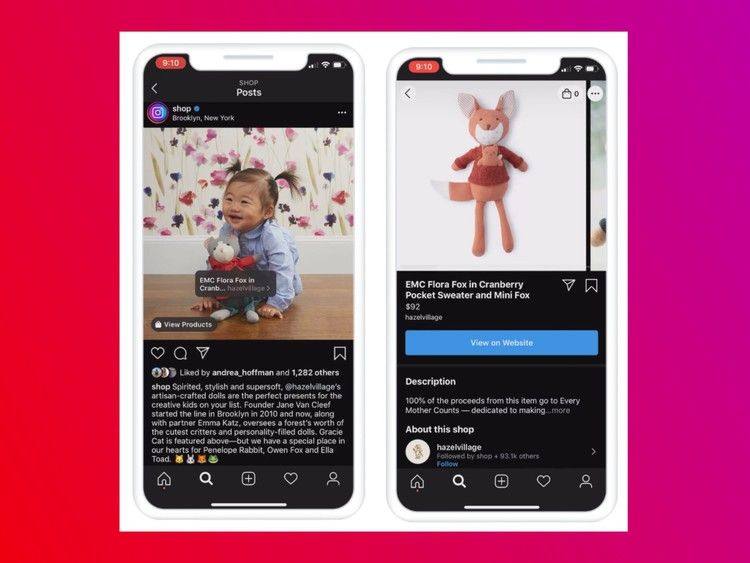 For more Instagram post inspiration, watch this episode of Fridge-worthy, where our two social media experts break down why, exactly, this one furniture store is SO GOOD at selling us rugs:
For more Instagram post inspiration, watch this episode of Fridge-worthy, where our two social media experts break down why, exactly, this one furniture store is SO GOOD at selling us rugs:
Pro Tip: Get experimental with these photo editing tools to really stand out from the crowd.
2. Add hashtagsUsing relevant Instagram hashtags is a smart strategy for all posts, including shopping content.
They’ll increase the likelihood that you’ll be discovered by someone new, opening up a whole new opportunity for potential engagement.
Searching the #shoplocal tag, for instance, brings up a plethora of small businesses — like epoxy artist Dar Rossetti — that I can buy from right on the spot.
Using the right hashtags can also help you land on the Explore page, which has a special “Shop” tab and is visited by more than 50% of Instagram users each month (that’s more than half a billion people).
3. Share a sale or promotional codeEveryone loves a good deal, and running a promotional campaign is a surefire way to drive sales.
Leisurewear brand Paper Label is promoting a sale on its essentials in the caption. Interested users can just click through to take advantage of the deal, and be decked out in spandex in no time.
When you promote the code directly in your shoppable Instagram posts, it’s even easier for customers to act.
4. Show your product in actionThe most popular type of video content on Instagram is the tutorial or how-to video. And this format is ideal for shopping posts because it offers viewers product education and proof-of-concept.
Here, Woodlot shows one of its essential oil-based soaps in action, lathered right up to transport you right to bathtime.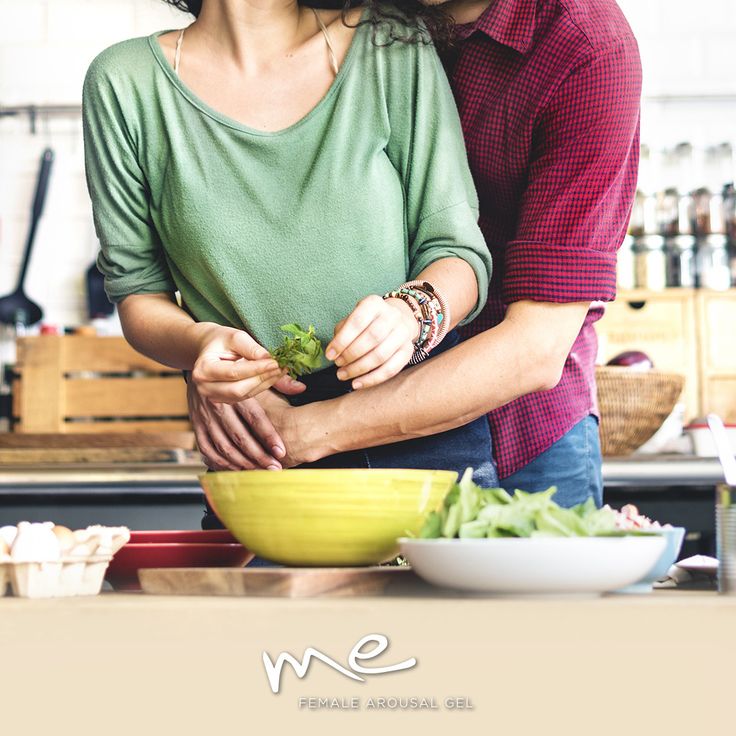
The principles of social media engagement all apply to product posts, too… and that includes the golden rule of authenticity.
There’s no need to stick to product copy. Your personality and voice should shine through here! Don’t miss the opportunity to connect with your audience with a thoughtful caption that offers surprising insight or an emotional connection. What inspired the piece? How was it made? Storytelling is a sales tool as old as time.
Postpartum care company One Tough Mother backs up all of its product posts with empathetic, often funny insights about new motherhood.
6. Play with colorColor is always eye-catching, so don’t be afraid to embrace a vibrant hue as a background for your product shot.
Artist Jackie Lee shares her graphic prints on a neon-colored background for maximum impact.
If you’re noticing a particular color palette trending among influencers, swerve to something that contrasts to stop scrollers in their tracks.
Having a consistent aesthetic on Instagram will help you improve your brand recognition and establish your identity.
It also helps customers scrolling through their feed or browsing the Explore tab to recognize your posts at a glance.
Did you know? There are a striking 37% more sales on average made by businesses who tag products in their feed posts.
Sebastian Sochan makes hand-tufted rugs in London, and shoots all of his pieces in displayed in unique ways throughout his studio. The color palette and lighting remain the same in every scene.
Your signature style on Instagram should be consistent with your brand visuals elsewhere. Your website, ads, and product packaging should all fit together, with complementary images.
8. Be inclusiveIf you want your brand to reach a wide audience, you need to ensure your images are meaningfully representative.
With over a billion users, it’s safe to say that Instagram users are a diverse group.
But too often, the people in Instagram promotions and images look the same: white, able-bodied, slim. Embrace all your potential customers with models who showcase all the different body types that are out there.
Period-product brand Aisle uses models of all genders, sizes, and races in the promotion of its products.
Another inclusivity tip: Caption your images descriptively so that visually impaired users can still learn all about your amazing product.
9. Share user-generated contentUser-generated content (UGM) refers to any posts or Stories from Instagram users that feature your products.
Not only do these posts provide new, real images of your photos in action, but they also boost your credibility. That’s because posts from real users are considered more authentic, and that authenticity translates to higher trust. They’re like visual testimonials.
Mother Funk boutique in Toronto regularly re-posts photos of locals wearing their clothing.
Show off your range with a carousel that showcases a variety of products. It’s a quick way for users to get a broader look at your latest collection, without having to tap allll the wayyyy to your Instagram Shop.
11. Collaborate with tastemakers
Team up with a tastemaker to help spread your product posts further. Invite an influencer or person you admire to curate a special Collection of their favorite goods from your catalog.
One example: Linens brand Droplet teamed up with Canadian influencer Jillian Harris to create a special line of products. The cross-promotion helped expose its products to a whole new set of eyes.
You’ll tag them in all of your posts; they’ll share with their own audience (and get a warm fuzzy feeling that you admire their sense of style). Win-win!
12. Craft compelling CTAs
Nothing pairs better with a beautiful photo than a compelling call to action.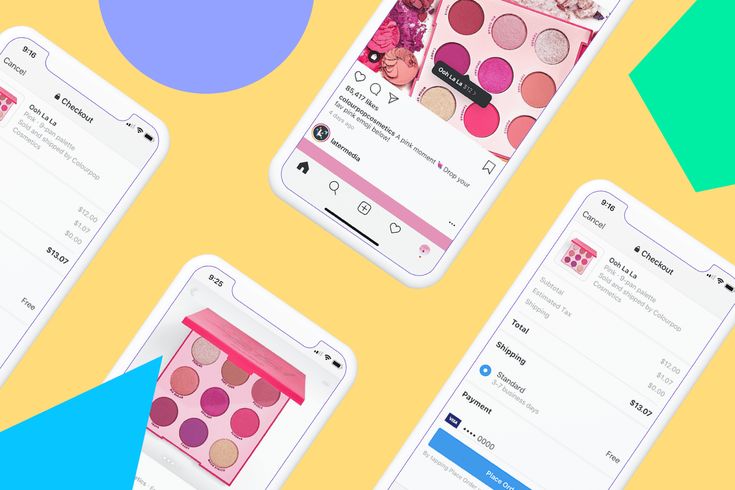 A call to action is an instructive phrase that pushes the reader to take action — whether that’s “Buy now!” or “Share with a friend!” or “Get it before it’s gone!”
A call to action is an instructive phrase that pushes the reader to take action — whether that’s “Buy now!” or “Share with a friend!” or “Get it before it’s gone!”
Eyewear brand Warby Parker, for example, gives followers the exact instruction they need to shop right away: “Tap the [shopping bag icon] to get yours!”
Brush up on your CTAs over here on the blog, and wield your new power responsibly.
Shopping on Instagram is only going to grow in popularity, and it’s just a matter of time until features like Instagram Checkout is global. So there’s no time like the present to dive in and find out how much it can benefit your business, as part of your overall social media strategy. Let the digital shopping sprees begin!
Save time managing your Instagram presence using Hootsuite. From a single dashboard you can integrate your social networks with your Shopify store, add products to any social media post, respond to comments with product suggestions. Try it free today.
Try Hootsuite for free
With files from Michelle Cyca.
Grow on Instagram
Easily create, analyze, and schedule Instagram posts, Stories, and Reels with Hootsuite. Save time and get results.
Free 30-Day Trial
How to connect Instagram Shopping | Manual
Since March 2022, Instagram has been banned in Russia. In other countries, all its features are still available.
Instagram Shopping allows users to buy directly from a photo or video in any section of the social network. At the same time, there are different opportunities in different countries. About all the nuances - in this article.
Instagram Shopping Features
When creating a store, you can choose a sales scheme. On the website, on Facebook, on Instagram or through private messages. There are limitations here. nine0003
Somewhere you can’t sell inside the application - only show tags, information about the product in the card, and then go to the site, from where you can already place an order.
In the US and a number of other countries, full functionality is available - placing an order directly in the application. It works on the basis of the Facebook Pay service. Companies decide for themselves whether to connect the checkout feature on Instagram or not.
If they decide not to connect, they will be able to transfer the user to the site, and use Instagram solely as a showcase. The company and bank account must be registered in the United States. nine0003
If you're temporarily in a country where Instagram Shopping isn't available (for example, while traveling), you may lose the ability to tag products. Restoring access takes up to 2 weeks.
How to connect Instagram Shopping
Consider a variant with limited functionality when sales go through the site. The feature is available on business accounts that are connected to a Facebook page.
MySklad already has integration with Instagram Shopping and Facebook — you can automatically upload products, current balances and prices to social networks, and add product links directly to posts. nine0003
nine0003
Create a catalog on your page on the social network, and unload the goods, their modifications, photos, prices and balances from My Warehouse. The data is synchronized automatically - you can set the interval or start the update yourself at a convenient time.
A link to the main online store is attached to each product - the buyer follows it and places an order. Integration is available free of charge on all tariffs of MoegoSklad. You can set it up if your business account on the social network has the Instagram Shopping feature. See video instructions for more details. nine0003
How to set up Instagram Shopping
- Create and link a directory. Can be done using the Commerce Manager tool, a desktop platform for managing sales on Facebook and Instagram. The service helps to create a new catalog or connect an existing one, process orders, etc. To use product tags and stickers, select an e-commerce catalog.
- Connect Instagram Shopping in your profile settings and submit your account for verification.
 It usually takes several days. The verification status can be found at any time in the "Purchases" section in the settings. As soon as the account is approved, a notification will be sent from Instagram. nine0032
It usually takes several days. The verification status can be found at any time in the "Purchases" section in the settings. As soon as the account is approved, a notification will be sent from Instagram. nine0032
After that, you can create a post with a shopping feature. Up to five products can be added to a post with one image, and up to 20 products can be added to a post with multiple photos or videos. You can only add one product sticker per post in Stories.
Thus, you use Instagram Shopping as a storefront - a buyer on the social network will examine the product, but will go to the site to purchase.
Instagram Shopping Tags and other opportunities to promote
Instagram Shopping has a set of tools that make trading easier.
Collections of goods. You can collect products into groups by topic. At the same time, it is not necessary to make collections that are familiar to everyone, for example, “New Products” or “Hits of Sales”. Categories can be any and convenient for customers. You can create "10 Gifts for Grandma" or "All for the Holidays".
Categories can be any and convenient for customers. You can create "10 Gifts for Grandma" or "All for the Holidays".
Product tags. Instagram Shopping Tags are special tags. The user clicks on them and gets to the page with information about the product. From there, he can go to the site and make a purchase. Thus, the number of clicks decreases, and the client does not postpone the purchase. nine0003
Advertising. You can set up ads with product tags. You can promote already existing publications with tagged products in the feed or popular, or create new ads in Ads Manager.
You can also create custom audiences for advertising: select groups of users who have performed a specific action. For example, those who viewed or saved the product. How to set up ads - we tell below.
You can attract new customers by creating new custom audiences or expanding old ones. Create a user group from both Facebook and Instagram. You can include more sources if you choose audience expansion.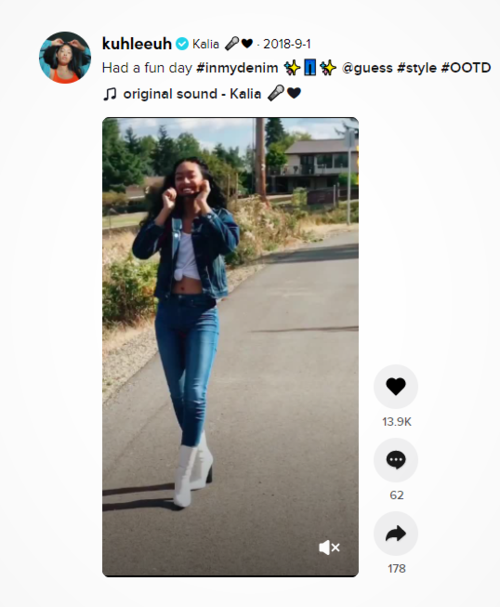 nine0003
nine0003
For example, you can create a shopping custom audience that includes people from both Facebook and Instagram. You can also create a shopping custom audience based on multiple events. For example, based on the Add to Cart and View Product Details events.
Who and what niches Instagram Shopping suits
To understand which product is easier to promote on Instagram, you need to look at the portrait of the platform's audience. It's more of a female audience. Age category from 18 to 34 years. nine0003
Hence the assumption of which products will sell well on Instagram:
- Things that reflect the lifestyle - clothes, jewelry, shoes, accessories, cosmetics, perfumes, sporting goods.
- Trendy products that reflect the spirit of the times. It can be anything from a case for wireless headphones to masks and sanitizers.
- Visually appealing products whose purchases are dictated by emotions. For example, decorative interior items or handmade.
 nine0032
nine0032
The list can be supplemented with household appliances, car parts and pet products. We will talk about limitations in the next section.
The US was among the first to gain access to Instagram Shopping in 2018. And there, entrepreneurs can already draw conclusions about its effectiveness.
Magnolia Boutique women's clothing store owner Susan DelPriore told Big Commerce that after publishing 117 tagged posts, traffic from Instagram increased by 4% and revenue from the social network increased by 20%. She advised telling subscribers about the new feature in the feed and stories, as well as doing cross-promotion in other social networks. In addition, it is important to give instructions on how to place an order correctly. nine0003
John Lott, director of children's clothing store SpearmintLOVE, said that after 208 posts on Instagram Shopping, traffic from the social network increased by 12.61%, and revenue from Instagram increased by 8%. He also noted that it was important to tell subscribers about the new feature - the store published instructions in stories for two weeks.
Do not forget that in the USA the option of ordering and paying directly from the social network works.
What not to sell on Instagram
Instagram is owned by Facebook and is part of its advertising network. The same rules apply for paid publications of both sites.
For example, you cannot advertise and sell tobacco and tobacco products, as well as prescription drugs, drugs, and wiretapping devices.
We have put together in a table a list of all products that cannot be advertised on Instagram. Download and study it.
Fragment of tableDownload Facebook and Instagram trading rules
How to manage the range of products in Instagram Shopping
On Instagram, just like on Facebook, you need to upload the products you are going to sell to a catalog. There are two ways to link a catalog to your social network account:
- Via Commerce Manager. This is a do-it-yourself tool available in Facebook Business Manager.

- Through a partner e-commerce platform. For example, Shopify or Big Commerce. nine0032
By the way, if you have a store on Shopify, you can connect it to the MyStorage service. This is how you add data on orders and counterparties from the platform for launching an online store to a single accounting system, where there is everything for online trading.
In My Warehouse, you can always see information about the balances that will be automatically uploaded to Shopify.
Try MySklad
With the catalog you can: nine0003
- Add and manage product details. You can upload an image, write a description, set a price, change color or size. And also - add several positions at once and a link to the store's website.
- Group ads. This is useful if you need to combine different posts with a common theme. For example, information about discounts and promotions.
- Create selections for stores. To show customers all the products that may be of interest to them.
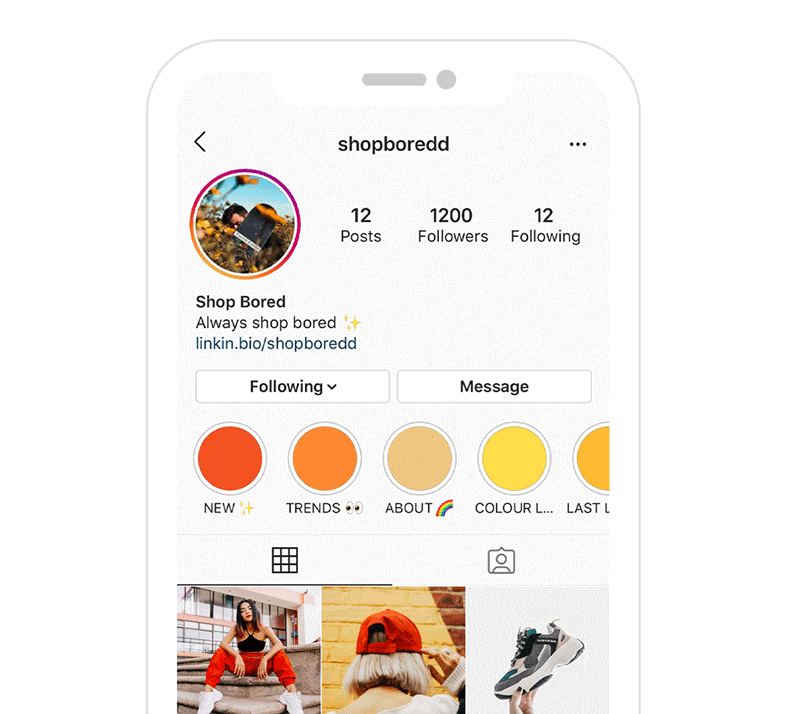 nine0032
nine0032 - Assign permissions. Then other people or partner companies will be able to work with your catalog.
- Download country and language information. This way, buyers will automatically see the correct information and prices for items in the ad or in the store.
Read also: 7 problems that prevent trading on the Internet
It is not necessary to create multiple directories. All product data can be stored in one. You can change information about a product in the catalog at any time. But it is important that it always contains accurate data on prices and availability of each item. nine0003
Also, the rules for returning goods and funds should be written either on your website or in the store's Instagram account: for example, in current stories or in a separate post.
Sometimes sellers do not indicate the cost of goods and call it only in private messages. But not everyone does this. For example, the NeBabushka yarn store does not hide prices, says its owner Natalya Maltseva. The ability to put a price tag directly on a photo in a post is convenient for her. nine0003
The ability to put a price tag directly on a photo in a post is convenient for her. nine0003
We have never closed prices. The price in the label in the post will not scare anyone away. And if this happens, then this is not a representative of our target audience.
Natalia Maltseva
shop owner "NeBabushka"
See also: How to tie big money: the success story of the Nebabushka yarn store
According to Natalia Maltseva, Instagram Shopping tools will help meet spontaneous demand: “Now it’s traditional for us — follow the link in the profile description. And the person is forced to either leave the post and follow this link, or enter the name of the site in the browser.” nine0003
But for some sellers, the main disadvantage of Instagram Shopping is precisely that live communication with the client is lost. Sellers say that sometimes with the “answered price in PM” format, a dialogue is started with the client, which ultimately leads to a sale.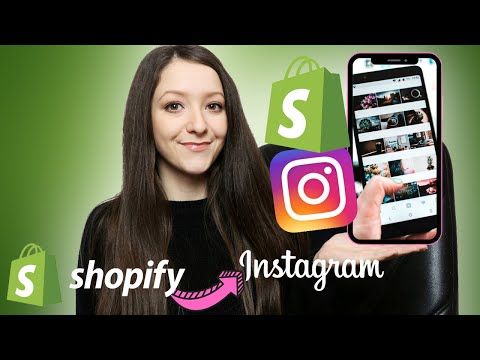 Indeed, in a live conversation, the seller can always offer an alternative or resell something else.
Indeed, in a live conversation, the seller can always offer an alternative or resell something else.
Firstly, you can use visual content to attract potential customers, and secondly, you can immediately get feedback. nine0003
“If you break Instagram down into elements, then there will be no unique tools for promotion in the social network,” says Ekaterina Pyankova, a target specialist at MoegoSklad.
Hashtags, targeting, bloggers, smart feed - all this is also available in other social networks. Taken together, the social network continues to be one of the best for business. There are probably almost no brands left that do not have an Instagram account.
Ekaterina Pyankova
targetologist of My Warehouse
The owner of the NeBabushka store believes that the secret of Instagram's effectiveness is that communities of people with the same interests are quickly formed there.
People come to see what's going on in the store. And through Instagram, we convey the atmosphere that residents of other cities and countries cannot feel when they come to the store. For them, this is a kind of window.
And through Instagram, we convey the atmosphere that residents of other cities and countries cannot feel when they come to the store. For them, this is a kind of window.
Sales in social networks are suitable for those who want to receive orders online and at the same time do not invest in the creation and promotion of an online store. Watch our tutorial to learn where your products will sell best, how to process orders, and how you can save money. nine0003
Get master class record
Targeted advertising
There are three main ways to promote your store on Instagram:
- targeted advertising,
- advertising with bloggers,
- advertising in thematic communities.
Ekaterina Pyankova considers target to be the most effective of them. This is an advertisement that is shown to an audience according to predetermined parameters: user behavior on the network, their age, interests and field of activity.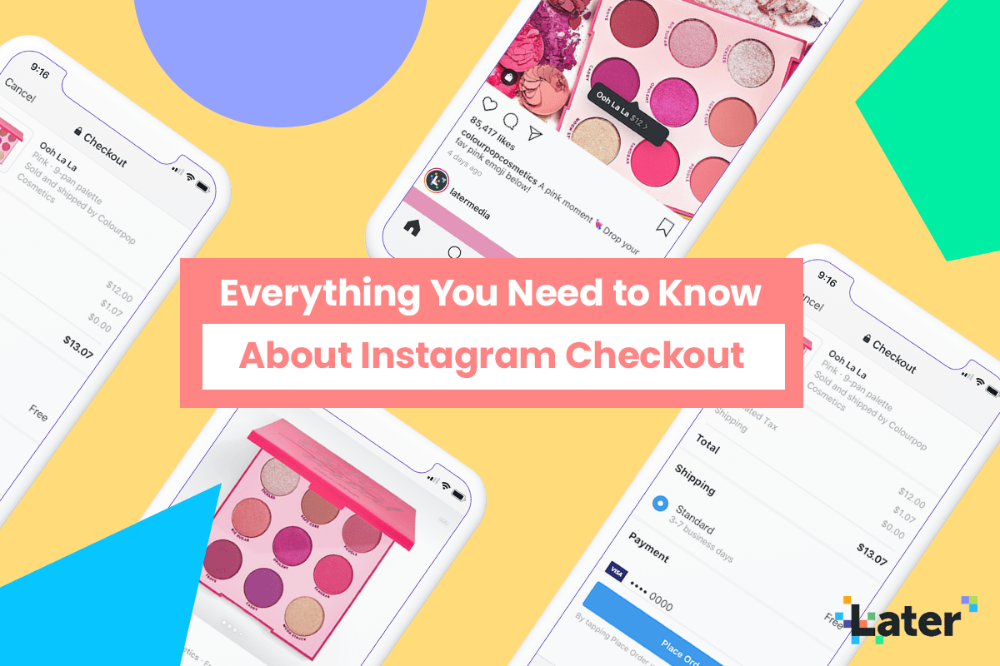 nine0003
nine0003
It is easier for those who use it to increase sales, because in this way the publication is most likely to be seen by those who are interested in buying. To run targeted advertising, all you need is a business account.
There are no fixed numbers on Instagram. Sometimes it's expensive and good, sometimes it's cheap and bad, sometimes it's expensive and bad, sometimes it's cheap and good. Any result is useful information for further work.
To run targeted ads, you need to set up a campaign in your Ads Manager dashboard. Through it, for example, you can run ads on: nine0003
- people who "similar" to your customers in terms of age, occupation and hobbies;
- all visitors to your page or site;
- regular customers;
- visitors who added items to their cart but did not purchase them.
Most stores stop at targeting or working with bloggers.
We review our products and engage bloggers to talk about our products.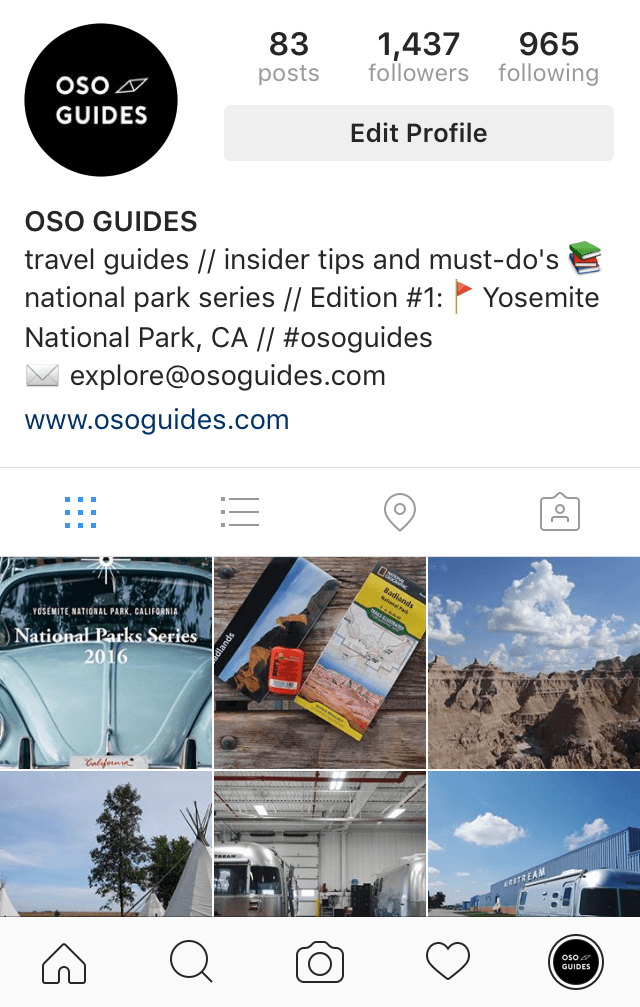 We didn’t work with targeting for a while, but now we have changed a specialist, and we will launch this type of advertising again. nine0003
We didn’t work with targeting for a while, but now we have changed a specialist, and we will launch this type of advertising again. nine0003
Shopping ads and posts tagged with Instagram Shopping Tags
Instagram Shopping tools complement existing types of advertising. For example, you can promote posts with tagged products or create ads from scratch in Ads Manager.
Product tagged ad For a business that has been promoting their products on Instagram for a long time, the button to go to the site under the publication is a chance to increase sales even more.The ability to place a link to buy under the post will significantly increase the conversion. nine0003
What hinders the promotion of goods
Since 2016, Instagram has had an algorithmic feed, so the time of publication of advertising posts does not affect their effectiveness in any way. But the cheating of subscribers, which is still sometimes used by both business and bloggers, will not lead to anything good.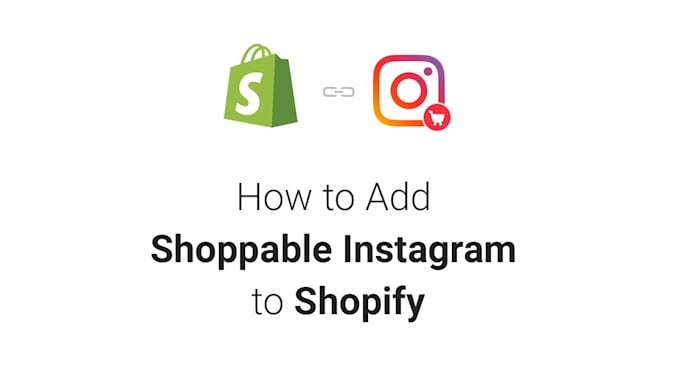 In the worst case, you can lose your account.
In the worst case, you can lose your account.
There are other difficulties that a business may face.
If you don’t have a constant influx of new subscribers, the number of outreaches decreases. Our task now is to ensure a constant influx of fresh subscribers. nine0003
“The audience has high requirements for brands. The account must comply with trends and actively adapt to new ones. And at the same time, there are high requirements for sincerity and openness,” explains Ekaterina Pyankova.
The influence of Instagram is based on visual imagery and on conveying emotions through text and video. If a person did not immediately respond to your offer, it is likely that in a second he will be distracted and fly away somewhere else. nine0003
For example, it’s not enough for a clothing brand to simply post a photo. The audience expects videos from production, promotions, contests, high-quality videos, user-generated content.
The audience of the social network is spoiled, any “respite” threatens with replies and loss of interest.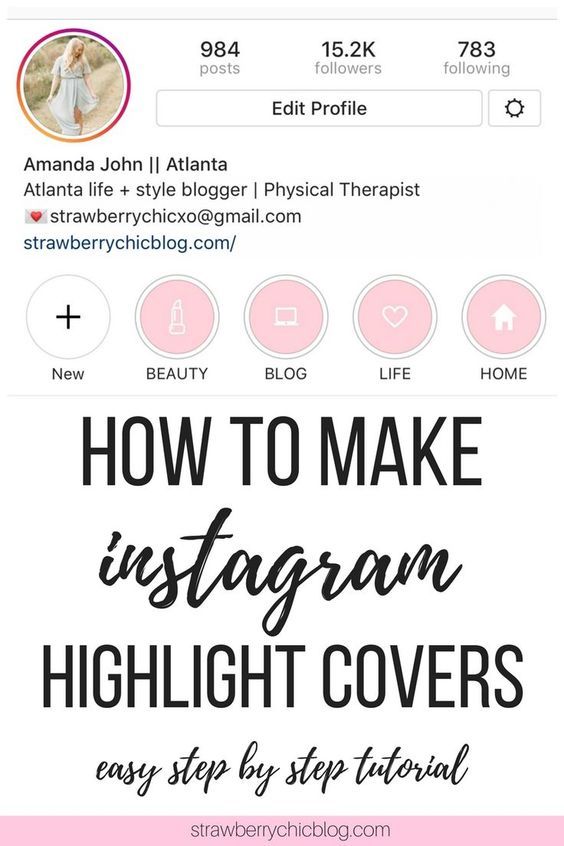 You need to constantly post new exciting content and communicate with subscribers.
You need to constantly post new exciting content and communicate with subscribers.
How to increase user engagement on Instagram:
- Post real photos: anything that looks too photoshopped or perfect will turn off. nine0032
- Encourage user generated content. Ask customers to take a photo or video of your product and then post it to your feed or stories.
- Collaborate with others. You can expand your audience by partnering with different complementary brands. For example, if you sell sunglasses, caps or hats would be an addition.
Can Instagram disapprove ads?
Yes, if it violates Facebook's ad trading rules. For example, you cannot advertise illegal products and 18+ products. And there should be no hints of discrimination and violence in advertising. nine0003
They may not miss it by mistake - due to a failure in automatic moderation. In this case, you can challenge the decision, and the ad will be re-checked by a person.
Read also:
- Fulfillment for an online store: when is it necessary, how to prepare and how to save money
- How to enable payment by QR codes: business guide
- How to create a VKontakte store
How to work with Shopping Tags Instagram in Russia in 2019year - Marketing on vc.ru
Someone makes money on Instagram, and someone publishes their photos and trains their finger muscles by putting likes.
49 216 views
How to become the first and stop being second? Grow and be aware of new opportunities in social networks. For example, such as Shopping Tags.
What is Shopping Tags
Shopping Tags are shopping tags, or the feature of tagging products on Instagram (similar to the ability to tag people). nine0003
On it you can see a brief description and cost of the product, and use it to go to the manufacturer's website to learn more about the product and purchase it.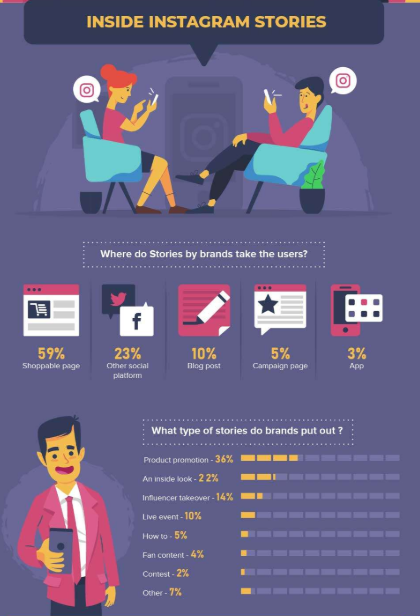
You can put tags both in materials and in “stories” (regardless of the number of subscribers).
How
works1. In a story with Shopping Tags, the bag icon and the text "Tap to view products" are displayed in the left corner of the photo.
2. When you touch any area of the photo, you see a card with the name of the product and its cost. nine0003
3. When you click on the card, you go to the seller's catalog (loaded from the Facebook page) with a description of the item and a link to the site.
4. When you click on the link, you get to a site where you can read about what you are interested in and buy it online.
What is the salt
The main goal is to increase sales of large trading accounts through a social network.
The function solves those platform inconveniences that prevent users from quickly and easily getting information about products and making purchase decisions. nine0003
What inconvenience does
solve- Inability to add links in publications.
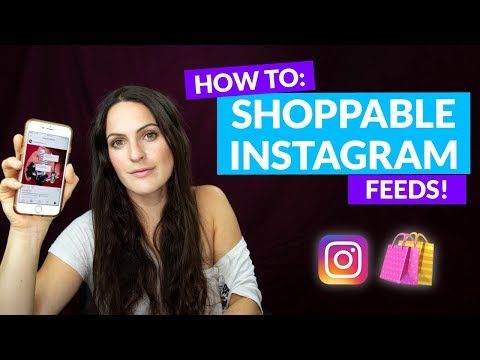
- Ability to add links in "stories" only if there are 10 thousand subscribers in the account.
- Ability to add only one link in the header of the account.
Pluses
- Convenience and speed.
- Increase website traffic and sales. nine0032
- Availability of statistics on clicks, popularity, completed purchases.
Limitations and disadvantages
- Posts and "stories" with trade tags cannot be promoted.
- You cannot tag both a product and a person at the same time.
- Trade tags can only be placed on publications that were made after the instrument was connected. nine0031 You cannot add tags when using delayed posting.
How to set up and who can do it
The product tagging feature can be accessed by:
- Doing business in one of the countries available for this tool.
 Russia is not there. The list of countries is here.
Russia is not there. The list of countries is here. - Sells not services, but material goods.
- Does not sell prohibited items (drugs, animals, weapons, etc.). For more information about the ban, follow the link. nine0240
- Converted an Instagram account to a business profile.
- Connected an account to a Facebook page.
- Created a product catalog on a Facebook page and linked it to an Instagram account.
If all the conditions are met, the application will automatically check the account for suitability and send a notification that Shopping Tags are available to you.
It is said that the notification sometimes does not come, so it is better to check the settings yourself periodically. nine0003
Detailed instructions here.
Important: for everything to be successful, the application must be updated to the latest version.
What to do if you are from Russia
There is no 100% scheme, because Russia is not included in the list of countries where the function is available. But motherland is not a death sentence :)
Many Russian companies managed to gain access to the function and set it up on their account.
The most effective way to solve the problem is to beat it with a brow: write to the Facebook support chat: in English, asking you to enable Shopping Tags, explaining why you need them (actively sell on the page, spend a lot of money on advertising). nine0003
Important: you should write to support only after you have fulfilled all other conditions.
How Shopping Tags will affect the electronic market in Russia and in the world
The e-commerce industry is growing rapidly.
Economists predict a 6% increase in online sales in 2019 compared to 2017 and 2018.
But even without economists, it is clear that the main thing for people in the 21st century is convenience and speed.



